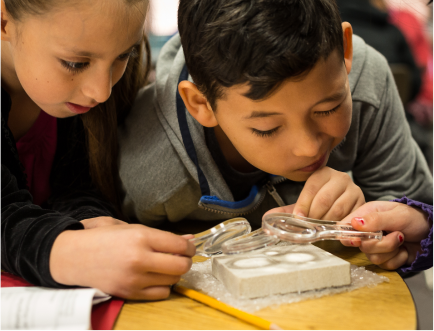EiE® Educator’s Portal
Museum of Science, Boston
Sign up to receive 4 weeks
of FREE STEM activities:

Week 1 - Fun with Forces, How a
Circle is like a Rectangle &
Climate Change (Gr 3-5)

Week 2 -Climate Change (Gr 6-8),
What Arctic Ice Can Tell Us About Climate
History & Engineering for Reuse
.png?width=165&height=90&name=Rectangle%2021%20(1).png)
Week 3 - Engineering Design
Challenge, Cybersecurity (Gr 6-8)
& Did the Dinosaurs Disappear?

Week 4 - Engineering for Health,
Engineering for Sport &
Animal Adaptations
Be sure to browse below for some more EiE offerings including webinars, professional development opportunities and more activities!
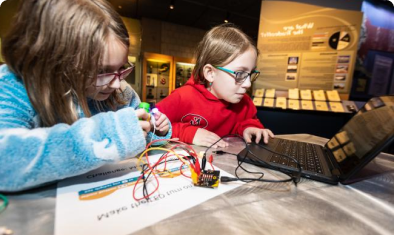
Why EiE?
EiE offers curricula, training, and materials that can help you build standards-aligned STEM foundations, open minds to implement hands-on engineering activities, and new career paths.
.png?width=394&height=237&name=Research%20Questions%20(2).png)

Careers for Engineers
Wondering which STEM topics will help your students grow? Check out this quiz to help students learn what engineering careers might be best for them.
Other EiE Offerings

Professional Development
View our webinar on demand and learn strategies to implement engineering design processes in your classroom using Pear Deck.

An Engineering Design Challenge,
Powered By Pear Deck
The five lessons in this collection were designed by EiE and Pear Deck to support this year’s Engineering Design Challenge,“See Yourself in STEM.”
The following slides explore how plastic is made, plastic’s environmental consequences, and the benefits of making plastic biodegradable.
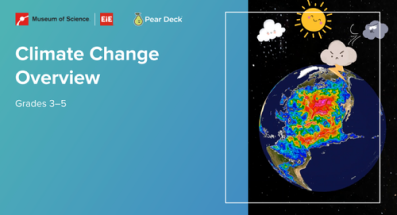
EiE: Climate Change Overview, Gr 3–5
Examine the causes and effects of climate change, clarify important terms and concepts, and create predictive models.
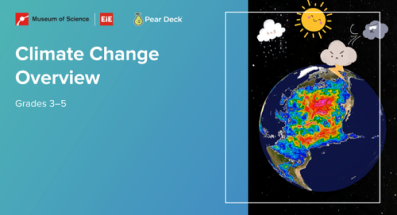
EiE: Climate Change Overview, Gr 6–8
Examine the causes and effects of climate change, clarify important terms and concepts, and create predictive models.

EiE: Extreme Temperatures, Gr 3–5
Draw conclusions about extreme temperature changes in Earth’s climate, and then explore local environments to suggest mitigation and adaptation strategies.
.png?width=500&height=271&name=EiE_%20Extreme%20Temperatures%2c%20%20Gr%203%E2%80%935%20(1).png)
EiE: Extreme Temperatures, Gr 6–8
Draw conclusions about extreme temperature changes in Earth’s climate, and then explore local environments to suggest mitigation and adaptation strategies.

EiE: Extreme Precipitation, Gr 3–5
Examine precipitation data, draw conclusions about the changes in Earth’s climate, and review a video about temperature’s impact on extreme precipitation. Then explore their own local environments to suggest mitigation and adaptation strategies.
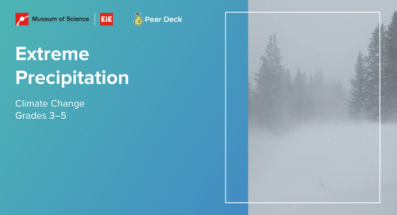
EiE: Extreme Precipitation, Gr 6–8
Examine precipitation data, draw conclusions about the changes in Earth’s climate, and review a video about temperature’s impact on extreme precipitation. Then explore their own local environments to suggest mitigation and adaptation strategies.


